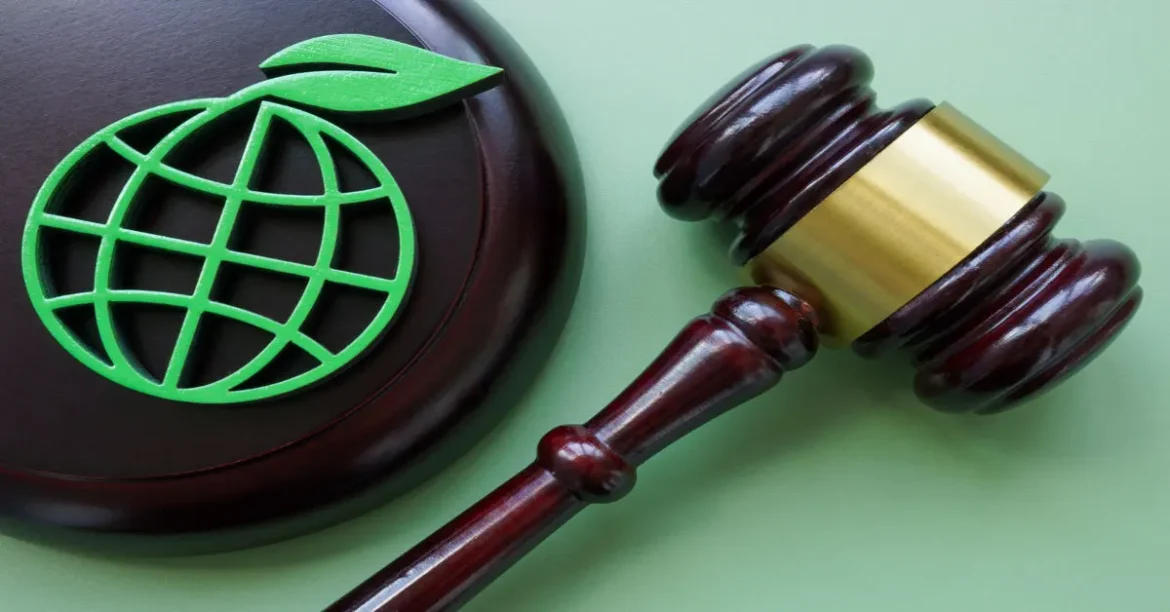Key Takeaways
- India’s new biodiversity regulations mark a shift towards technology-inclusive, industry-responsive, and community-conscious governance.
- Digital Sequence Information (DSI) regulation is a game-changer, bringing cutting-edge research and biotech under Access and Benefit Sharing (ABS) compliance.
- Simplified pathways for domestic users may boost innovation while ensuring equity.
- Implementation capacity, especially at the state and local levels, will determine real-world outcomes.
- Industries must proactively adapt compliance mechanisms to avoid penalties and reputational risk.
India is one of the world’s most biologically diverse countries, hosting nearly 8% of global biodiversity. To conserve this ecological wealth, the Government of India enacted the Biological Diversity Act, 2002, establishing the National Biodiversity Authority (NBA) and a decentralized three-tier structure comprising the NBA (central), State Biodiversity Boards (SBBs), and local Biodiversity Management Committees (BMCs). This framework was designed to ensure the fair and equitable sharing of benefits (ABS) from the use of biological resources and associated knowledge.
National Biodiversity Authority (NBA)
It is a statutory body under the Ministry of Environment, Forests, and Climate Change, Government of India. The NBA, headquartered in Chennai, is the central authority responsible for regulating access to biological resources and associated knowledge, ensuring fair and equitable benefit-sharing, and providing technical support to states.
State Biodiversity Boards (SBBs):
SBBs are established in each state to implement the Biological Diversity Act and Rules at the state level, advise state governments on biodiversity conservation, and facilitate the work of BMCs.
Biodiversity Management Committees (BMCs):
BMCs are established at the local level (village, municipality, etc.) to document local biodiversity, prepare People’s Biodiversity Registers (PBRs), and advise on biodiversity-related matters.
The three-tier structure is designed to ensure a decentralized approach to biodiversity conservation, with responsibilities shared across different institutions at the national, state, and local levels.
Now, over two decades later, the Biological Diversity (Amendment) Act, 2023, and the newly notified Biological Diversity (Access to Biological Resources and Knowledge Associated thereto and Fair and Equitable Sharing of Benefits) Regulations, 2025, seek to modernize this system. These reforms respond to changing global norms, especially the Nagoya Protocol, and emerging technologies such as Digital Sequence Information (DSI).
While the new regulations bring clarity and industry alignment, they also raise complex questions around implementation, equity, and enforcement.
Evolution of India’s Biodiversity Legal Framework
To understand the 2025 rules, we need to look at how India’s biodiversity laws have developed over time through global agreements and local changes.
Convention on Biological Diversity (CBD):
The Convention on Biological Diversity (CBD) is a legally binding multilateral treaty focused on the conservation and sustainable use of biodiversity, as well as the fair and equitable sharing of benefits arising from the utilization of genetic resources. It was opened for signature at the 1992 Earth Summit in Rio de Janeiro and entered into force in 1993.
India’s Ratification:
196 countries and the European Union are parties to the CBD, meaning they have ratified the treaty. India became a party to the CBD in 1994, committing to its principles and objectives.
The Biological Diversity Act, 2002
The BD Act1 was India’s response to the Convention on Biological Diversity (CBD) of 1992 and later, the Nagoya Protocol on Access and Benefit Sharing (ABS) of 2010. The Act prescribes penalties for violations of its provisions, including imprisonment and fines.
Key Features:
- Access Regulation: Requires prior approval for foreign entities and individuals before accessing Indian biological resources.
- Benefit Sharing: Mandates fair sharing of monetary and non-monetary benefits with local communities.
- Protection of Traditional Knowledge: Ensures recognition and safeguards the rights of indigenous and local communities.
Major Updates through the 2023 Amendment
The Biological Diversity (Amendment) Act, 2023, introduced significant changes to align India’s law with international practices and reduce compliance burdens.
Some of the key features are:
Decriminalization of Offenses: Replaced imprisonment with monetary penalties for most violations to encourage compliance.
Exemption for Traditional Knowledge Practitioners: Codified traditional knowledge and its practitioners are exempt from ABS obligations.
Simplified Compliance for Indian Entities: Startups, MSMEs, and AYUSH companies now face fewer procedural hurdles when accessing bioresources.
Inclusion of Digital Sequence Information (DSI): DSI is now explicitly covered under access and benefit-sharing obligations.
IPR Process Streamlining: Clarifies disclosure timelines and allows conditional ABS approval for intellectual property rights.
Empowered Biodiversity Management Committees (BMCs): Strengthens BMC roles in negotiating benefit-sharing and representing community interests.
Time-Bound Access Procedures: Introduces clear timelines and SOPs for granting access to biological resources.
Broadened Definitions: Expands key definitions to include modern applications like value-added products and digital knowledge.
Biological Diversity Rules, 2024
The Biological Diversity Rules, 2024, notified on 22 October 2024 and effective from 22 December 2024, replace the long-standing 2004 Rules. They operationalize the 2023 Amendment Act by introducing updated procedures, fees, and digitized systems.
Key Aspects of the 2024 Rules:
Streamlined Procedures:
The rules define specific timelines for various stages of approval processes.
Online Applications:
All applications for accessing biological resources are to be submitted online through the NBA portal, with exceptions for specific cases.
Revised Fees:
Increased fees for various approvals, with differential rates for individuals and entities.
Benefit Sharing:
The rules address benefit-sharing obligations for both Indian and foreign entities accessing biological resources and associated knowledge for commercial or non-commercial purposes.
Digital Sequence Information (DSI):
DSI, when used in inventions, is now included within the purview of the Act.
Past Violations:
Provisions are in place to regularize past violations or non-compliances related to the possession of Indian biological resources before April 1, 2024.
Foreign Entity Obligations:
Foreign entities are subject to specific obligations when accessing research results based on Indian biological resources or using foreign biological resources within India.
Commercialization of IPR:
The rules outline obligations for both foreign and Indian entities regarding the commercialization of intellectual property rights based on biological resources.
Adjudication Process:
Penalties for violations are adjudicated by an officer not below the rank of joint secretary, with appeals to the National Green Tribunal (NGT).
Robust PIC and MAT Framework
Prior Informed Consent (PIC) is required from local communities or BMCs before access. Mutually Agreed Terms (MAT) outline benefit sharing, utilization scope, and timeframes.
The 2025 NBA Regulations: Operationalizing the Amendments
The 2025 Regulations, officially titled the Biological Diversity (Access to Biological Resources and Knowledge Associated thereto and Fair and Equitable Sharing of Benefits) Regulations, 2025, were introduced to implement the amended Act. They serve as a practical guide to:
- Define compliance procedures,
- Set out benefit-sharing formulas,
- Introduce sector-specific clarifications
Key Features of the 2025 Regulations
1. Standardized Benefit Sharing Framework
- Benefits can be shared through monetary (royalties, access fees) or non-monetary (tech transfer, capacity building) means.
- Fixed percentages for high-value products and defined benchmarks for sectors.
- No benefit sharing for users with an annual turnover of up to Rs 5 crore.
- 0.2% of the annual gross ex-factory sale price (excluding government taxes) for users with a turnover between Rs 5 crore and Rs 50 crore.
- 0.4% for users with a turnover between Rs 50 crore and Rs 250 crore.
- 0.6% for users with a turnover above Rs 250 crore.
2. Digital Sequence Information (DSI) Regulation
- DSI refers to digitized genetic data from biological resources.
- The regulations bring genomic data users under ABS, ensuring companies using sequence information also share benefits.
3. Clarity on High-Value Biological Resources
- The 2025 Regulations outline benefit-sharing obligations.
- The NBA may, through guidelines, issue advisories on sector-specific or species-specific thresholds in the future.
- Ensures traceability of value chains in pharma, cosmetics, and biotech.
- Special provisions are in place for high-value or threatened species like red sanders, agarwood, and sandalwood, with minimum sharing percentages of 5%, potentially rising to 20% or more for commercial use.
| Framework | Applicability | Key Differences |
| 2004 Rules | Governed access procedures, approvals, fees | Practical but paper‑heavy, slow timelines |
| 2014 ABS Guidelines | Allowed informal benefit sharing, minimal DSI focus | Guidance‑based, lacked legal clarity on DSI/IPR |
| 2024 Rules | Updated procedures, digital workflows, faster timelines | Online filing, defined fees/forms, expanded user scope |
| 2025 Regulations | Enforce ABS with formulas based on turnover, cover DSI | Replaces 2014 guidance, defines ABS rates, tightens IPR obligations |
Callout: What Companies Must Do Differently Now
- Online application via NBA portal, with digital form submissions & fee payment under the 2024 Rules.
- Identify user category: Indian vs foreign, academic vs commercial, with additional IPR/DSI requirements.
- Follow ABS slabs in 2025 Regulations:
- ₹5–50 Cr turnover → 0.2%,
- ₹50–250 Cr → 0.4%,
- ₹250 Cr → 0.6%,
- Higher rates (5–20%) for high-value resources.
- For IPR-derived products, submit intimation within 45 days of grant and comply with specific benefit-sharing formulas.
- Maintain community PIC/MAT documentation per the 2024 Rules.
Divya Pharmacy v. Union of India (2018)2
Issue: Divya Pharmacy, the commercial arm of Patanjali’s Divya Yog Mandir Trust, challenged notices issued by the Uttarakhand State Biodiversity Board requiring the company to pay fair and equitable benefit sharing (FEBS) for its use of Indian botanical resources in its ayurvedic products.
The core question was:
Does the ABS requirement extend to Indian companies or apply only to foreign entities accessing Indian biodiversity?
Outcome: In December 2018, the Uttarakhand High Court ruled decisively:
Native entities are subject to ABS obligations—the legislative intent of the Biological Diversity Act (2002) supports extending benefit-sharing duties to domestic companies.
Literal statutory distinctions between Indian vs. foreign access under Section 7 versus Section 3 would allow Indian companies to bypass ABS, which would be “absurd” and contrary to the Act’s purpose.
The Court ordered Divya Pharmacy (with FY 2014–15 revenues of ₹421 crore) to pay approximately ₹20.4 million to the Uttarakhand Biodiversity Board.
Impact:
- Clarified domestic obligations: Established a firm precedent that all users of biological resources—regardless of nationality—must comply with NBA and SBB ABS requirements.
- Empowered biodiversity boards: State-level boards now have stronger jurisdiction to enforce ABS compliance, register domestic companies, and issue notices.
- Industry-wide implications: Dozens of MSMEs and mid-sized companies depending on biological inputs now face potential ABS liabilities and administrative scrutiny.
However, in 2024 the Himachal Pradesh High Court in Hygienic Research Institute v. HP SBB3 held that Indian firms under Section 7 only require “prior intimation,” not approval or ABS payments—challenging the nationwide scope of the Divya judgment . This conflict underscores ongoing legal uncertainty.
The conflicting High Court rulings have created legal ambiguity around whether Indian entities are mandatorily subject to benefit-sharing obligations under Section 7 of the Biological Diversity Act. Until resolved by the Supreme Court or clarified through legislative or regulatory guidance, this uncertainty may lead to inconsistent enforcement and compliance risks across states.
Monsanto-Mahyco Case (BT Brinjal Controversy)4
Issue:
Monsanto, through its joint venture Mahyco, accessed Indian brinjal germplasm (collected from Tamil Nadu and Karnataka universities) to develop the Bt brinjal event EE-1. They allegedly used these indigenous resources and modified them without obtaining prior consent or following ABS formalities under the BD Act (2002).
GM crops developed from Indian germplasm without clear ABS compliance.
NBA’s action:
In April 2012, the NBA voted to initiate prosecution proceedings against Monsanto-Mahyco and involved institutions. This followed formal complaints, including from the Environment Support Group.
The NBA invoked its authority under Section 3 of the BDA, asserting that:
- Even when genetic modification occurs, using Indian-origin genetic resources requires prior approval.
- Genetic engineering alone does not exempt users from ABS obligations tied to source material.
Impact:
Precedent for GM & DSI compliance: This episode firmly placed genetically modified organisms—and by extension, Digital Sequence Information derived from them—within the ABS regulatory perimeter.
MNC oversight and traceability: Set a clear signal that multinational corporations cannot bypass ABS by altering or synthetically modifying native germplasm.
Strengthened due diligence: Companies in biotech, pharma, and related fields must implement robust sourcing and documentation protocols, including detailed Material Transfer Agreements (MTAs), to ensure legal conformity.
Reconciling Legal Uncertainty on Domestic ABS Obligations
These revised rules and regulations have reinforced procedural clarity for access, benefit-sharing, and documentation—yet they also raise the need to harmonize judicial interpretations with statutory intent. Without clear guidance or a Supreme Court resolution, the question of domestic ABS liability remains a live and contested issue with important consequences for companies, regulators, and community rights.
Implications for Stakeholders
The 2025 regulations will impact a wide range of stakeholders, from industries and researchers to local communities and government bodies.
1. Pharmaceutical, Cosmetic & Biotech Industries
- Must now factor in ABS obligations during R&D and commercialization.
- DSI compliance will require clear documentation and potential new licensing structures.
2. Research Institutions
- Greater clarity means easier collaborations, but rigorous documentation of access and benefit-sharing agreements is mandatory.
3. Indigenous Communities
- Better positioned to claim fair benefits with new PIC/MAT guidelines.
- Need capacity building to participate effectively in negotiations and enforcement.
4. Government and Regulators
- Must now build monitoring systems for DSI, ABS, and benefit distribution.
- Stronger coordination between NBA, SBBs, and BMCs required to avoid overlap or delay.
To Sum Up
The 2025 NBA Regulations are more than a bureaucratic update—they represent a paradigm shift in how India protects and governs its rich biodiversity. With the inclusion of Digital Sequence Information, clearer benefit-sharing rules, and a greater emphasis on community participation, India is aligning itself with evolving global norms while safeguarding its national interests.
Yet, the challenge lies in implementation. Effective rollout will require capacity building at the grassroots, digital infrastructure, and continued multi-stakeholder dialogue to ensure both conservation and commerce benefit in equal measure.
India’s model—if executed with integrity and inclusivity—could become a global benchmark in balancing ecological sustainability with equitable development.



